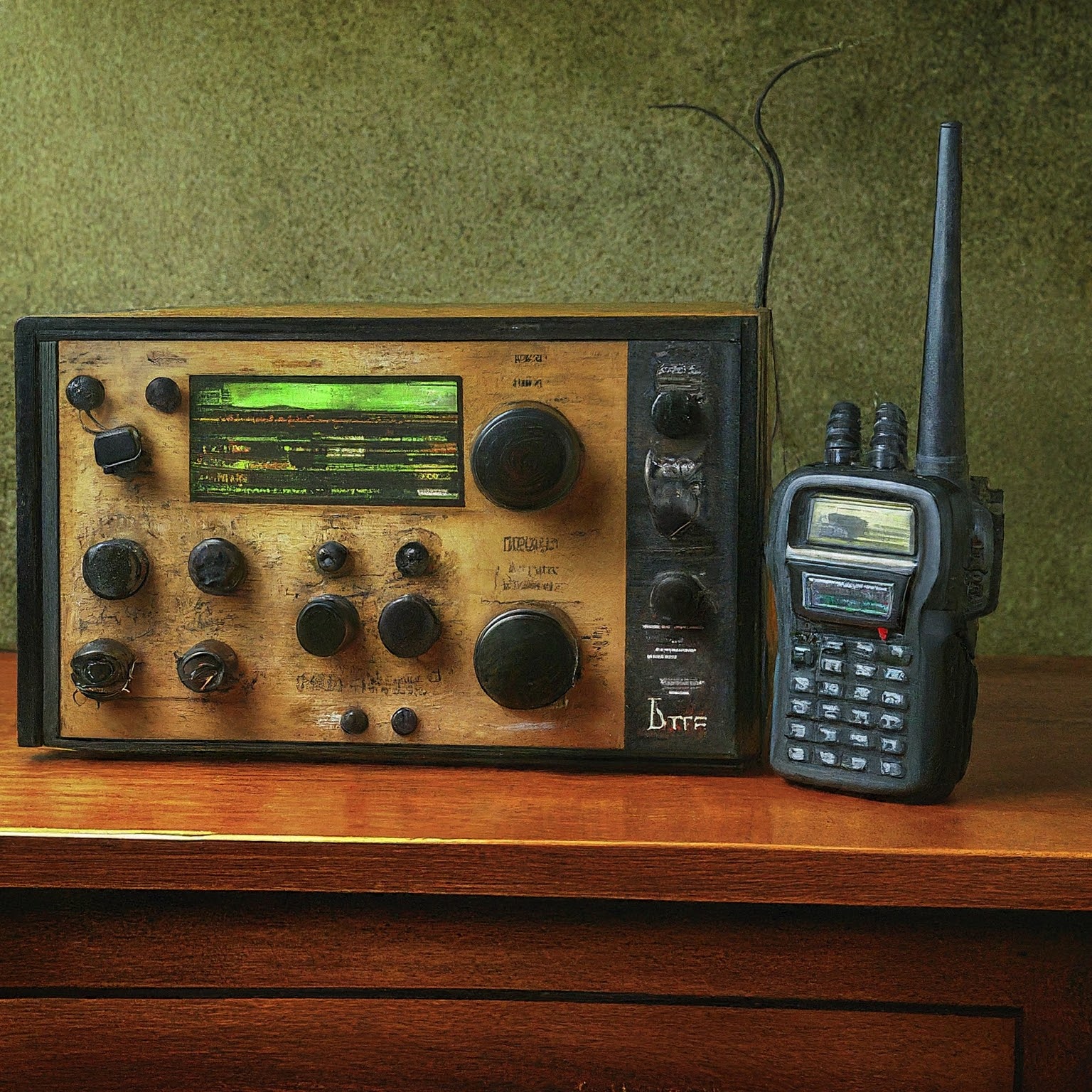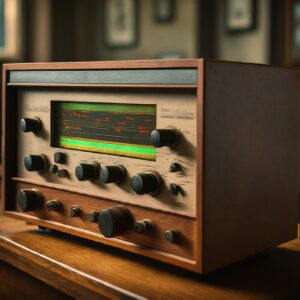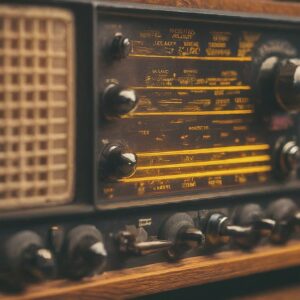Ever wondered if ham radios are still relevant in today’s digital age? You might be surprised to discover the wide range of applications and benefits ham radios offer.
From emergency communication to long-distance connections, ham radios have stood the test of time for a reason. As you explore the world of ham radios, you’ll find yourself intrigued by modern models’ versatility and advanced features.
Whether you’re a seasoned enthusiast or a curious beginner, there’s much to uncover about the capabilities and potential of ham radios in various scenarios.
Ham Radio Frequency Range and Applications
Ham radio operators use various frequencies, enabling communication across local, regional, and global distances. With the right ham radio equipment, gear, set, or system, an amateur radio station can tap into frequencies ranging from very high frequency (VHF) and ultra-high frequency (UHF) bands for local communication to high-frequency (HF) bands for regional and global reach.
The ham radio gear allows for versatile communication, making it ideal for emergency, disaster relief, and long-distance communication with other enthusiasts worldwide. Whether a handheld transceiver or a sophisticated base station setup, ham radio operators can explore a broad spectrum of frequencies to stay connected and informed.
Ham Radio Power Output and Signal Strength
To maximize the effectiveness of your ham radio transmissions, it’s essential to understand power output and signal strength. Here are three key factors to consider:
Power Supply:
Ensure your power supply is stable and capable of powering your radio equipment.
Amplifier:
Consider using a linear amplifier to boost your transmission power within legal limits and improve signal strength.
Antenna and SWR Meter
Use a well-matched antenna and an SWR meter to optimize your antenna system’s performance, directly impacting your signal strength.
Ham Radio Types
Now, let’s talk about the different types of ham radios.
You’ll learn about handheld, mobile, and base station radios.
Understanding these types will help you choose the right one for your needs.
Handheld Radios
When choosing a handheld radio for ham radio use, consider the frequency range and power output to ensure it meets your communication needs effectively. A handheld ham radio should be portable, easy to operate, and provide clear audio.
Here are three key features to look for in a handheld ham radio:
- Frequency Range: Ensure the handheld radio covers the necessary frequency bands for your intended use, including VHF and UHF bands.
- Transceiver Capability: Look for a handheld radio with transceiver capabilities, allowing you to transmit and receive signals.
- Microphone and Speaker Quality: Check the quality of the microphone and speaker to ensure clear and effective communication in various environments.
Finding a handheld ham radio with these features will enhance your communication capabilities while on the go.
Mobile Radios
Consider mobile radios’ versatility and power output when selecting the most suitable option for your ham radio needs. A mobile ham radio is designed for vehicles and offers higher power output than handheld radios, allowing for a greater communication range.
When installing a mobile ham radio in your vehicle, you’ll need to consider factors such as the type of coaxial cable to use, the installation of an external speaker for improved audio quality, and the inclusion of a duplexer to enable simultaneous transmission and reception on a single antenna.
Mobile radios are ideal for communication on the go, but a base station ham radio with a larger antenna and power supply may be a better option if you require a more powerful and fixed setup.
Base Station Radios
If you’re looking for a more powerful and fixed ham radio setup, consider the option of a base station radio with a larger antenna and power supply. Base station radios provide a robust amateur radio transceiver for your home or designated location.
Here’s why they’re worth considering:
- Enhanced Performance: Base station radios typically offer higher power output and better receiver sensitivity than mobile radios, allowing for improved long-distance communication.
- Expanded Features: These radios often come with advanced control panels and built-in tuners, providing more versatility and customization for amateur radio activities.
- Stability and Reliability: With a dedicated power supply and a larger external antenna, base station radios offer a stable and reliable communication platform, especially during emergencies.
Investing in a base station radio can significantly enhance your ham radio experience, providing a solid foundation for amateur radio operations.
Ham Radio Portability Options and Use Cases
Exploring the portability options and use cases for ham radios can greatly enhance emergency communication preparedness.
As a ham radio operator, a portable ham radio rig allows you to maintain communication during emergencies or on the go. Utilizing QRP (low-power) ham radio equipment enables efficient use of battery power, extending operational time during field operations.
A lightweight, compact battery pack is essential for powering portable ham radio setups, ensuring uninterrupted communication in remote locations or during power outages.
Portability is key for hiking, camping, or emergency response situations where carrying a full-size base station may not be feasible.
Understanding and investing in portable ham radio options expands your capabilities as an operator and enhances your readiness for communication in various scenarios.
Advanced Features and Technology
So you’re ready to take your ham radio experience to the next level?
Let’s discuss some advanced features and technology to enhance your communication capabilities.
From digital modes to GPS functionality, weather resistance, and emergency alert systems, these advanced features offer new ways to connect and stay safe in various situations.
Digital modes
Digital modes offer ham radio operators the ability to transmit data, images, and messages using advanced technology and enhanced features.
Here are three key components of digital ham radio:
- Frequency Dial: Digital modes allow precise tuning of the frequency dial, enabling you to select specific frequencies for clear and efficient communication.
- Modulator and Demodulator: These components are crucial for converting digital signals into radio waves for transmission and then back into digital information upon reception, ensuring accurate data transfer.
- Repeater: Digital modes often utilize repeaters to extend the range and coverage of transmissions, making it possible to communicate over longer distances with greater reliability.
GPS functionality
With its advanced features and technology, GPS functionality enhances the capabilities of ham radios for precise location tracking and navigation. When integrated with satellite ham radio systems, GPS functionality allows for accurate positioning data to be transmitted alongside HF (high frequency), VHF (very high frequency), and UHF (ultra high frequency) ham radio communications.
This means that you can communicate with other operators and know your exact location or the location of others in real time. Whether you’re participating in a search and rescue operation or simply navigating unfamiliar terrain, the GPS functionality in ham radios provides an added layer of safety and convenience.
Additionally, the combination of GPS and ham radio technology opens up emergency communication and coordination opportunities, making it an invaluable tool for amateur and professional radio operators.
Weather resistance
Enhancing the capabilities of ham radios’ weather resistance is essential to advanced features and technology that ensures reliable operation in various environmental conditions. To make your ham radio weather-resistant, consider the following:
- External Meter: Look for a ham radio with an external meter that’s weather-sealed to withstand rain, snow, and extreme temperatures. This feature allows you to monitor your radio’s performance even in challenging weather conditions.
- Earpiece: Invest in a high-quality, weather-resistant earpiece. This will ensure clear communication during outdoor activities, even when faced with wind, rain, or dust.
- Morse Code Key: Choose a weather-resistant Morse code key that can withstand moisture and harsh weather conditions. This feature allows you to communicate via Morse code, even in adverse conditions.
These advanced features will ensure your ham radio remains operational when you need it the most.
Emergency alert systems
Invest in a ham radio with advanced emergency alert systems to ensure timely and reliable notifications during critical situations. These advanced systems can receive alerts from various sources, including government agencies, weather services, and local authorities.
Look for radios with Specific Area Message Encoding (SAME) technology, which allows you to program the radio to receive alerts for your area. Some radios also offer automatic alert functions, where the radio will turn on and sound an alarm when it receives a severe weather or other emergency alert.
Additionally, consider radios with built-in sirens, color-coded alert indicators, and the ability to receive text alerts. These advanced emergency alert systems can be crucial for staying informed and safe during emergencies or natural disasters.
Antenna Compatibility for Enhanced Performance
Ensuring antenna compatibility is essential to achieve enhanced performance with your ham radio. Here are three key factors to consider:
- Frequency Range: Ensure that your antenna is designed to cover the frequency bands used by your ham radio. Different antennas are optimized for different frequency ranges, so choosing one that matches your radio’s bands is crucial for optimal performance.
- Antenna Gain: Consider the gain of the antenna, which determines its ability to focus transmitted and received signals in a particular direction. A higher gain antenna can improve your communications’ range and clarity.
- Connector Type: Check that the antenna’s connector type matches the one on your radio. Using an incompatible connector can result in signal loss and degraded performance.
Battery Life and Power Management
Maximizing battery life for your ham radio is crucial for uninterrupted communication, and effective power management plays a key role in achieving this goal.
To extend battery life, consider using low power settings when possible and turning off unnecessary features. Carry spare batteries or a portable power source for longer operations.
Regularly check and maintain your battery to ensure optimal performance. When operating from a fixed location, consider using a solar panel or a generator as a backup power source.
Implement power-saving habits, such as turning off the radio when not in use or using efficient charging methods.
User-Friendly Interface and Controls
When choosing a ham radio, you must ensure an easy-to-use interface, programmable features, and a clear LCD screen. These points will make operating the radio more convenient and enjoyable, allowing for seamless communication during your ham radio activities.
Consider these factors when evaluating different models to find the one that best suits your needs.
Ease of use
With its intuitive controls and user-friendly interface, ham radios provide a straightforward and accessible communication experience for users of all levels of expertise. Whether you’re a beginner or an experienced operator, ham radios offer a seamless user experience that enhances communication capabilities.
Here’s why ham radios are easy to use:
- Simple Interface: The controls and buttons on ham radios are designed for easy navigation, making it simple to adjust settings and frequencies without confusion.
- Clear Display: Most ham radios feature clear, easy-to-read displays that provide essential information at a glance, ensuring that users can quickly assess the status of their communication.
- Intuitive Operation: Its intuitive design makes Operating a ham radio effortless, allowing users to focus on the communication rather than struggling with the equipment.
These user-friendly features make ham radios an accessible and enjoyable communication tool.
Programmability
Ham radios offer a user-friendly interface and controls that can be easily programmed to suit your communication needs. You can customize various settings such as frequency, channel names, and scanning options with programmability. This lets you streamline your communication experience and access the features you need most frequently.
Many ham radios also have software to connect the radio to a computer for easier programming. The ability to program your radio ensures that you can adapt it to different situations and frequencies, making it a versatile tool for various communication purposes.
Whether you’re using it for emergency communication, amateur radio contests, or everyday conversations, the programmability of ham radios gives you the flexibility to tailor your device to your specific requirements.
LCD screens
The LCD screens on ham radios provide a user-friendly interface and controls that enhance the programmability feature, allowing for easy customization of settings such as frequency, channel names, and scanning options. Here are three key ways in which the LCD screens enhance user experience:
- Clarity: The high-resolution LCD screens display information clearly, making it easy to read and navigate different menus and options.
- Intuitive Controls: The screens are accompanied by intuitive control buttons or touchscreens, enabling users to make adjustments and selections effortlessly.
- Customization: Users can personalize the display settings, such as brightness and contrast, to suit their preferences and improve visibility in various lighting conditions.
The user-friendly nature of LCD screens makes operating ham radios more efficient and enjoyable.
Durability and Build Quality
When considering durability and build quality in ham radios, prioritize robust construction and reliable components over flashy features. Look for radios with sturdy chassis, reinforced corners, and water-resistant seals to withstand outdoor use and occasional bumps or drops. Quality materials like aluminum or magnesium alloy can enhance durability without adding unnecessary weight.
Pay attention to the quality of buttons, knobs, and connectors, as these components are prone to wear and tear with frequent use. Additionally, choose radios with well-protected internal circuitry to ensure longevity and reliability.
While advanced features are appealing, a solid and durable build is essential for ham radios, especially in demanding environments or emergencies. Investing in a radio with excellent durability and build quality will provide long-term satisfaction and performance.
Top Ham Radio Brands on the Market
Prioritizing durability and build quality in ham radios naturally leads to exploring the top brands on the market for reliable performance and lasting value. When choosing a ham radio, consider these top brands known for their quality and performance:
- Yaesu: Renowned for its rugged construction and advanced features, Yaesu radios are favored by many ham radio enthusiasts for their reliability and durability.
- Icom: With a reputation for producing high-quality radios with exceptional receiver performance, Icom is a popular choice among ham radio operators prioritising top-notch technology and craftsmanship.
- Kenwood: Known for its innovative design and robust build, Kenwood offers a wide range of ham radios that are highly regarded for their durability and long-term performance.
Choosing a reputable brand ensures a reliable and long-lasting communication tool when investing in ham radio.
Ham Radio Price Range
Considering your budget is crucial when exploring ham radios, as prices can vary significantly depending on your required features and capabilities.
Entry-level handheld ham radios can cost as little as $30-$50, providing basic communication functions for those on a tight budget or just starting in the hobby.
Mid-range mobile or base station radios with more advanced features like higher power output, digital modes, and better receiver sensitivity typically range from $200 to $500.
For top-of-the-line ham radios with cutting-edge technology, extensive frequency coverage, and robust construction, you can expect to invest anywhere from $600 to $3000 or more.
It’s essential to weigh the features you need against your budget to find the best ham radio that meets your requirements without breaking the bank.
Licensing Procedures
Paying attention to the regulations and licensing procedures for operating ham radios is essential as you navigate through the diverse price ranges available in the market. Understanding the licensing procedures will ensure that you comply with the law and help you become a responsible and knowledgeable ham radio operator.
Here are three key points to consider when obtaining your ham radio license:
- Study Materials: Look for study guides and practice exams to help you prepare for the licensing test.
- Licensing Classes: Consider enrolling in a licensing class to better understand radio operations and regulations.
- Testing Locations: Find out where and when licensing exams are administered in your area to plan for the test.
Frequently Asked Questions
Can Ham Radios Be Used for Emergency Communication and Disaster Relief Efforts?
Ham radios can be used for emergency communication and disaster relief efforts. They provide a reliable means of communication when other methods fail, making them a valuable tool in times of crisis.
What Are Some Common Troubleshooting Issues With Ham Radios, and How Can They Be Resolved?
If you’re having trouble with your ham radio, common issues like antenna problems, electrical interference, or microphone malfunctions can occur. Try checking connections, adjusting settings, or replacing faulty equipment to troubleshoot and resolve the issue.
Are there Any Specific Regulations or Restrictions for Using Ham Radios in Different Countries?
In different countries, specific regulations and restrictions apply to using ham radios. You should research and understand the rules in the country you plan to operate in. Adhering to these guidelines ensures legal and proper use of ham radios.
What Are Some Popular Accessories or Add-Ons That Can Enhance the Performance of Ham Radios?
Consider popular accessories like external antennas, amplifiers, and tuners to enhance your ham radio’s performance. Upgrading to higher-quality microphones and speakers can also improve audio clarity. Don’t forget about power supplies and portable battery packs for on-the-go operations.
How Can I Connect My Ham Radio to Other Communication Devices or Networks?
You can connect your ham radio to other communication devices or networks by using connectors and adapters. Ensure the devices are compatible and follow the manufacturer’s instructions for a secure and reliable connection.
- Ham Radio Accessories - February 9, 2024
- Ham Radio Amplifier - February 8, 2024
- Ham Radio Tuners - February 8, 2024





